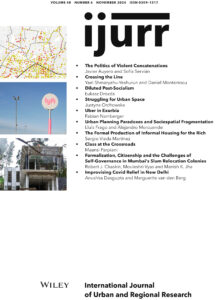Housing informality in wealthy contexts is an overlooked phenomenon, particularly in the global South. This article addresses the role of public institutions in the production of housing informality among the wealthy. For this purpose, it analyses the operation of public institutions in relation to the proliferation of luxurious villas in the eastern hills of Bogotá. Three villas were selected as archetypes of informal urbanization among the elite in the eastern hills, and their stories—or informality pathways—were reconstructed through interviews, maps and policy documents. The article aims to unveil how public institutions have contributed to the creation of informal spaces, often in collusion with private entities. Specifically, public institutions demonstrated conflicting internal agencies and multi-level fragmentation, resulting in flexible regulations tailored to fit the construction practices of the elite. These characteristics were instrumental in establishing spaces of exception for the wealthy in the eastern hills of Bogotá and will likely be mirrored in other informal settlements in the global South.
Details
Written by:
Sergio Vieda Martínez
Digital Object Identifier (DOI)
https://doi.org/10.1111/1468-2427.13280
About DOI

